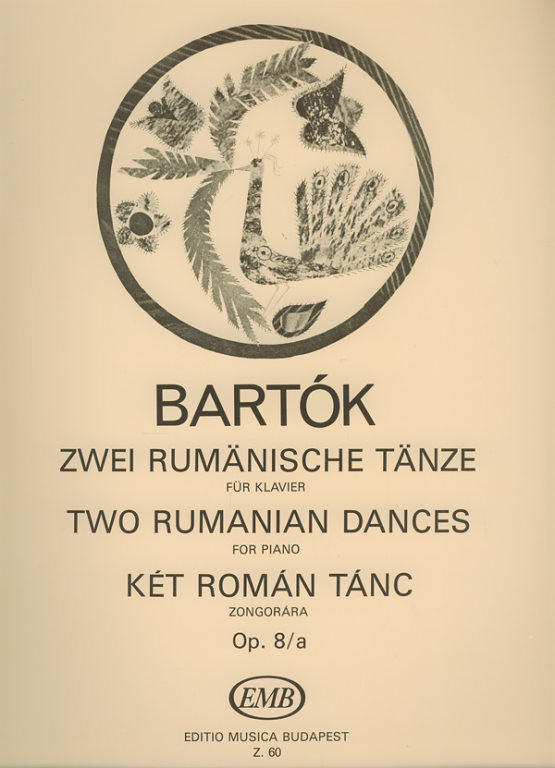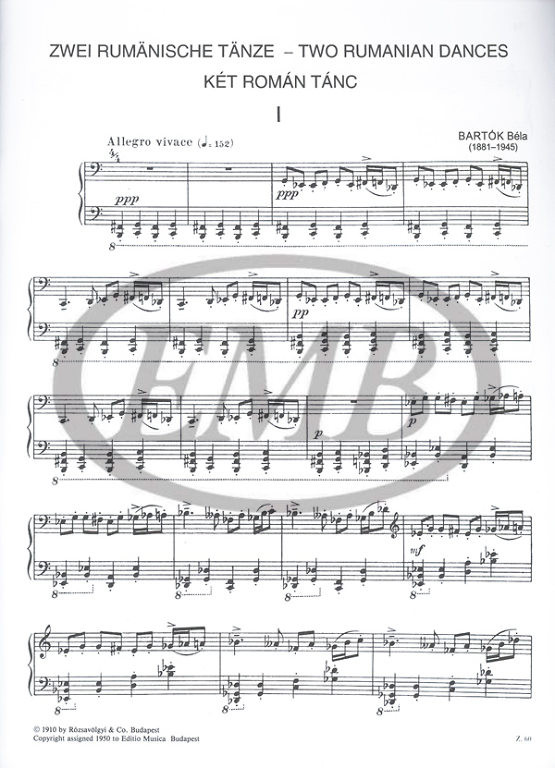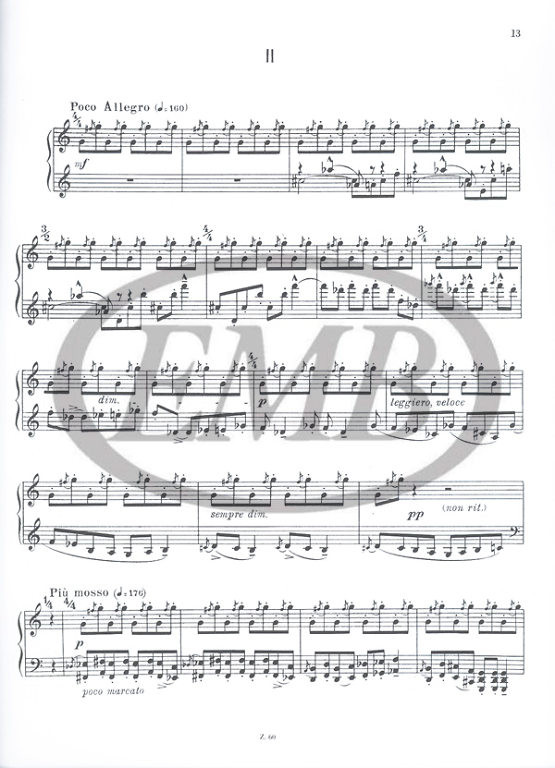Description
Bartók Béla: Two Rumanian Dances (1909-1910) / Editio Musica Budapest Zeneműkiadó / 1951 / Bartók Béla: Két román tánc (1909-1910)
Paperback
Made in Hungary
Setting: Piano
Period: 20th Century
Language: Hungarian, English, German
Length: 20 pages
Format: Bach (23 x 30,2 cm)
Weight: 0.091 kg
Published: 1951
Publisher: Editio Musica Budapest Zeneműkiadó
Item number: 60
ISMN: 9790080000601 / 979-0080000601
Hangszer/letét: Zongora
Korszak: XX. század
Nyelv: magyar, angol, német
Terjedelem: 20 oldal
Formátum: Bach (23 x 30,2 cm)
Súly: 0,091 kg
Első megjelenés: 1951
Kiadó: Editio Musica Budapest Zeneműkiadó
Katalógusszám: 60
'Bartók wrote the first dance around the time of the Romanian movements of the 'Seven Sketches', after his first trip collecting Romanian folk music in July-August 1909. The second dance is the fruit of March the following year, and it was only after some time he decided they should be published as a pair. From the beginning, audiences were impressed by the first dance, in the composer's peculiar performance, with its initial drumming, and its driving rhythms. If less popular, compositionally the second dance is more original. He parades and varies his material in a chain form, and this too is reminiscent of the dances heard in the playing of Romanian Transylvanian village musicians, which in his scholarly work Bartók called 'motive dances.'
'Hogy a népszerű 'Román népi táncok'-tól való különbözőségét lássák, Bartók több alkalommal hangsúlyozta: itt 'a témák eredetiek, nem népdalok, de a román népi zene ihletét tükrözik'. Az 1. táncot a 'Vázlatok' román tételeinek szomszédságában, 1909. július-augusztusi első román népzenegyűjtése után írta. A 2. tánc a következő év márciusának termése, és csak egy idő után döntött úgy, hogy párban jelenjenek meg. A közönségre kezdettől nagy hatással volt az 1. tánc a zeneszerző különleges, dobolás-szerűen induló, űzött ritmusú, hatásos előadásában. Habár kevésbé népszerű, zeneszerzőileg még eredetibb a 2. tánc. Füzérformában vonultatja fel, variálja anyagait, ebben is az erdélyi román falusi zenészek játékában hallott, Bartók tudományos dolgozataiban motívumosnak nevezett táncokra emlékeztet.'
Contents / Tartalomjegyzék
| 1. |
Allegro vivace
|
|
|
| 2. |
Poco allegro
|
























